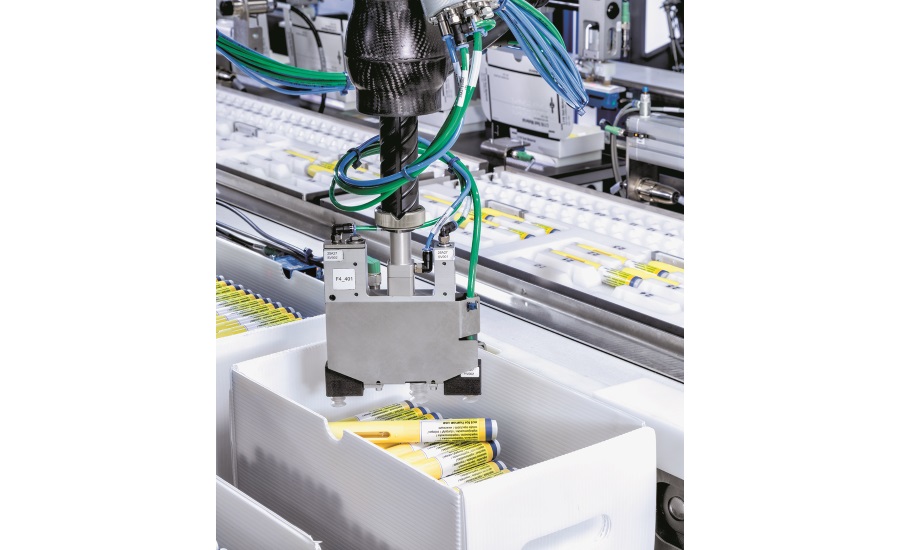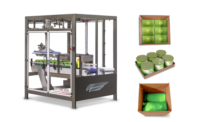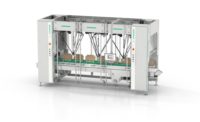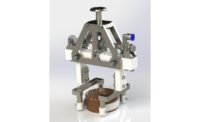Company: Gerhardt Schubert GmbH
Website: www.gerhard-schubert.com
Equipment Snapshot: Based on its proven 3D scanner, Schubert has developed a new 3D camera which, thanks to exact determination of position, can also reliably pick up disorganized products from a storage bin. Whether unsorted, shifted or lying on top of each other, with this new 3D image recognition, products being fed in can be accurately detected and precisely picked up by the robot tool. Schubert not only delivers outstanding accuracy with the new camera, it has also increased the efficiency in pick & place applications and the degree of automation in secondary packaging. Customers therefore benefit from even more cost-effective and more reliable packaging processes.
Schubert’s 3D camera complements the company’s portfolio of image processing systems – especially for pick & place applications. After each robot intervention, i.e. pick-up, the work area is recorded using the 3D camera and the exact position of the next product to be picked up is calculated. Current position data enables the robot to accurately pick up the products even if they have shifted or are stacked.
Similarly to the Schubert 3D scanner, the technology of the new camera is based on a stereo approach, whereby two high-resolution surface sensors, along with integrated LED illumination, ensure the recording of gray-scale images from two different angles (stereoscopy). Additionally, a coded light pattern is used to highlight structural surfaces of the 3D objects.
The image data and the evaluation are visualised at the control terminal. To this end, the gray-scale images as well as the height profile of the 3D objects are both used. Each product to be recognised is characterized by a corresponding parameter set which is accessible to the system operator via a specific menu. The type and number of parameters are application-dependent and can be individually adjusted. Depending on the task, they are defined in advance and stored in the control system. This means that setting adjustments or modifications are not required during operation. At the control terminal, the operator accesses information on the object type, orientation, surface analysis, the surface’s height profile, as well as on quality characteristics in terms of surface and height, etc.
During the development of the 3D camera, it was especially important that the hardware and software components be as similar as possible to those of the Schubert 3D scanner. Thanks to its user-friendliness and seamless integration into the TLM packaging system, the new development clearly reflects Schubert’s philosophy of “single-source” modular plant engineering.
“With the use of the latest hardware and optimized, high-performance image processing software, we succeeded in coming a clear step closer to the long-term goal of optical 3D recognition,” explains Dr. Abdelmalek Nasraoui, Head of Image Processing Development at Schubert.
The objective of ongoing developments is to equip this application for universal use in different industries and for varied applications. All sectors in the manufacturing industry stand to benefit from 3D recognition technology. The virtual elimination of complex sorting and separation systems thanks to intelligent “bin picking,” height control based on product quality assessment, resource optimization thanks to controlled masses and volumes, high-level flexibility and quick production conversion, as well as the protection of subsequent process components from disturbances by products outside of the tolerances, are just some of the very promising fields of application of Schubert’s 3D recognition technology.






